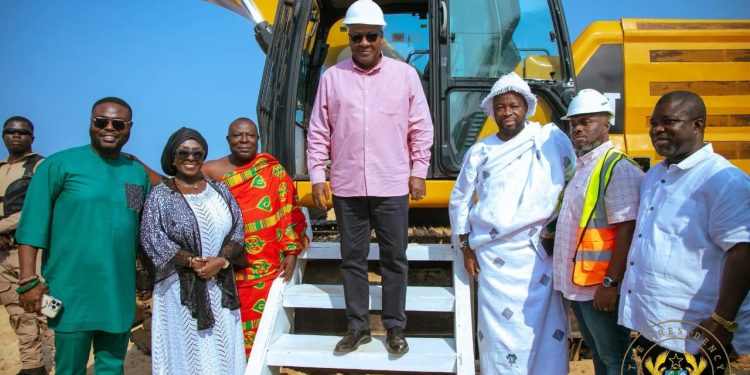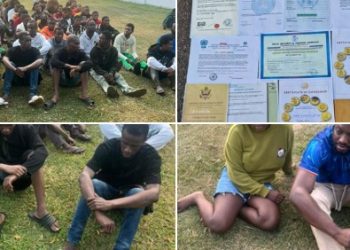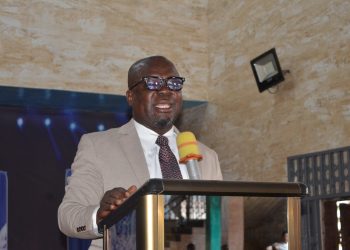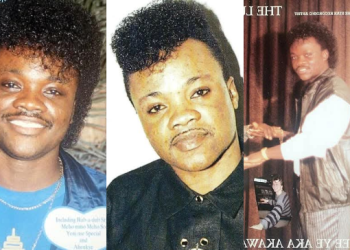President John Dramani Mahama on Saturday cut the sod for the construction of Phase 2 of the Blekusu Sea Defence Project at Agavedzi in the Ketu South Municipality of the Volta Region.
The Project, which is being executed by Messrs Amandi Holdings Limited over the period 2025 to 2029, will bring relief to communities of Blekusu, Agavedzi, Salakope, Amutsinu and Adina, which are threatened by coastal erosion.
President Mahama, in his address, said: “The sea has taken a lot from this community. It has taken land, it has taken livelihoods, and it has taken our peace of mind, but today I stand here to say no more will the sea consume our land.”
“We’re here to reclaim what has been lost, to rebuild stronger, to offer our children a future where they are not forced to flee their homes because of rising tidal waves.”
He said the occasion was not merely symbolic, but it was a clear demonstration of what responsive leadership could do when it listens, when it cares, and when it acts.
He said in 2015, during his previous administration, the then government commenced Phase I of the project, the Coastal Protection Project, to tackle the serious threat of tidal waves eroding the coastline of the area.
He said that phase comprised 4.3 kilometres of coastal defense works, offering some relief and protection to the communities affected, which unfortunately, for nearly a decade after that, the Second Phase of the project stalled.
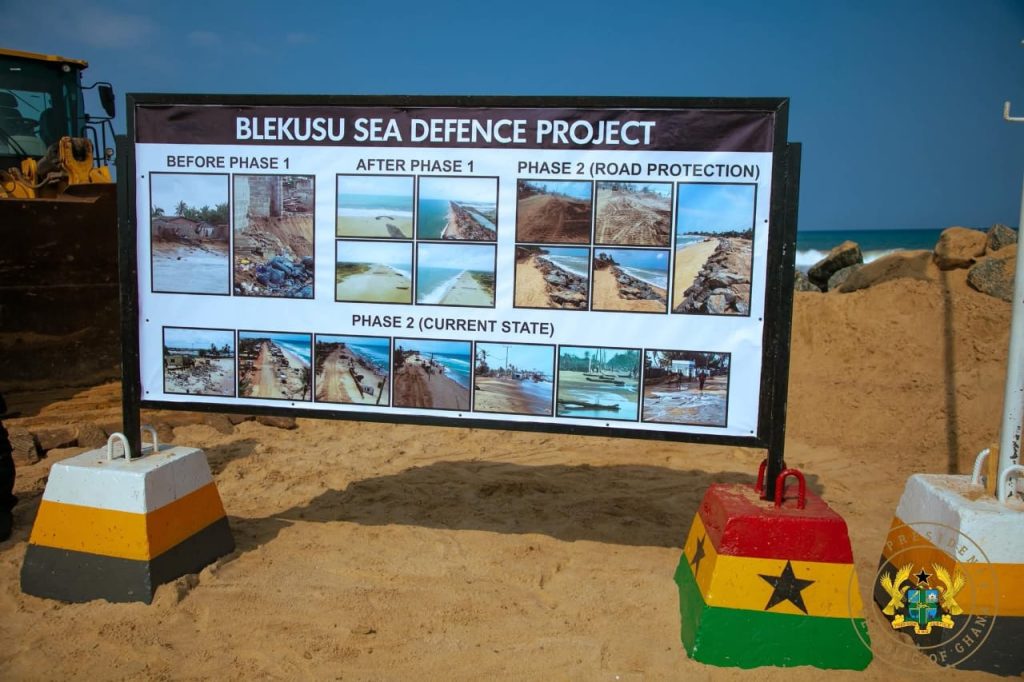
However, the President noted that despite repeated appeals by residents, the Members of Parliament (MPs), the traditional authorities, and civil society, the project did not commence.
The President said in 2017 and again in 2021, destructive tidal waves swept through this area, uprooting families, destroying homes and eroding livelihoods.
President Mahama said, he could still picture the videos and the pictures showing the images from the effects of these tidal waves.
He said the pain, the anxiety, the fear that was etched on the faces of their fellow citizens.
He noted that earlier this year, during his visit to the Volta Region, he pledged that the government would no longer delay the action that was required to take away their pain and fear.
“And today, I’m proud to say that this commitment is being fulfilled. Your cries have not been in vain. Your voices will no longer be ignored. Today is your day, a day of renewal and a day of reassurance,” he said.
He said Ghana’s coastline stretches for over 550 kilometres, and that this was one of the country’s most critical assets, because it supports the livelihoods of its people through fishing, trading, and tourism.
He said, however, it was also among the most vulnerable to the devastating effects of climate change, particularly coastal erosion and tidal wave flooding.
The President said what was happening in Blekusu, Salakope, and Agavedzi was not isolated, stating that similar tragedies were unfolding along other parts of Ghana’s coastline, from Ada to Angola, from Cape Coast to Axim, and they could not continue to turn a blind eye.
The project, he said, represents the government’s national resolve to defend coastal communities and preserve lives, homes, and infrastructure.
The Project would deliver a total of eight kilometres of robust coastal protection, comprising 37 groins, dune restoration, reinforced embankments, and other shoreline defense infrastructure.
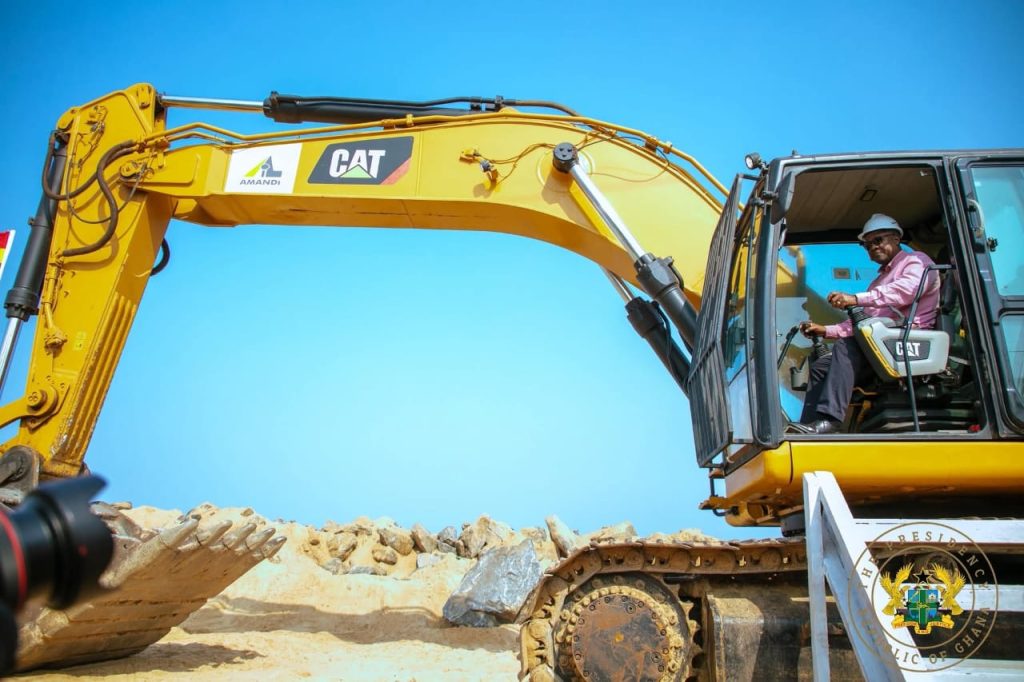
In addition to the coastal protection works, they were incorporating community infrastructure that would boost the local livelihood of their people, and this includes a modern fish market, cool storage and processing facilities for the fisher folk, fish drying and places for smoking fish, a car park and a lorry station.
Public sanitation facilities would also be provided, and a waste collection system will be put in place, he stated.
“So, this is more than just coastal protection work. It is a comprehensive resilience initiative, blending environmental protection with socio-economic infrastructure,” the President said.
He added: “This project and others like it reflect my government’s broader commitment to building a resilient and inclusive Ghana, where no citizen is left behind, and where communities, regardless of location, can live in safety and dignity.”
President Mahama said the West Africa Coastal Areas (WACA) programme, which aims to enhance coastal resilience in West Africa, was currently awaiting approval at the Ministry of Environment.
He said the WACA project would take care of the rest of the coastline after the Blekusu Sea Defence Project ends, all the way to Aflao, and it would help to protect the coastline.
He announced that the Government had received a grant facility from the Chinese Government for the construction of the Aflao New Market.
Mr Kenneth Gilbert Adjei, the Minister of Works, Housing, and Water Resources, presenting the project overview, noted that the Blekusu Coastal Protection Project (Phase II) was of national importance, reflecting the government’s dedication to protecting vulnerable communities from the impacts of climate change.
He explained that the Eastern coastline, especially the Ketu South Municipality, had long suffered severe erosion and flooding due to rising sea levels and tidal surges, as the first phase, completed in 2015, protected 4.3 kilometres of shoreline.
He explained that Phase II was a strategic extension covering an additional eight kilometres, including construction of 37 groynes, beach nourishment and dune restoration, Shoreline stabilisation and erosion control infrastructure.
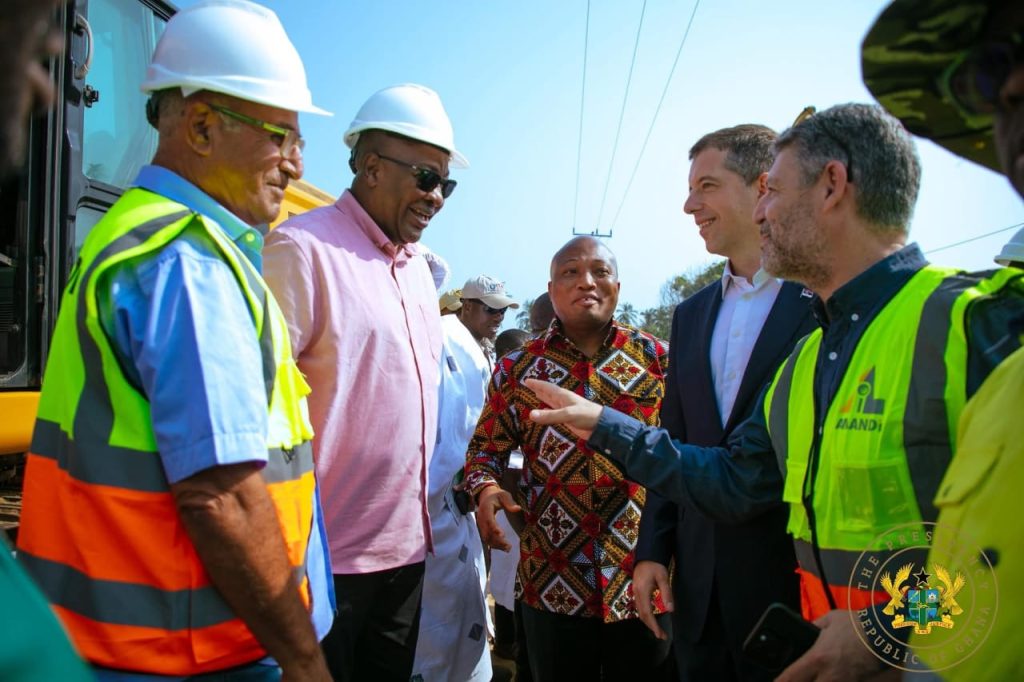
The project was also set to deliver several socio-economic benefits, including a modern fish market, cold storage facilities, fish drying and smoking areas, a lorry and car park, public washrooms, and a solid waste management system.
“These interventions will help improve livelihoods, sanitation, and local economic development,” the Minister said.
He reiterated the Ministry’s commitment to timely and quality execution of the project and called for full cooperation from all stakeholders, especially the beneficiary communities.
The Volta Regional Minister, Mr James Gunu, thanked President Mahama, the Ministry of Works and Housing, and the Ministry of Finance, for allocating funds for the project.
He pledged full collaboration between the Volta Regional Coordinating Council (VRCC) and the contractors to ensure successful implementation.
Togbui Adama III, Makorsor of Somè, on behalf of the chiefs and people of the beneficiary communities, thanked President Mahama for honoring his pledge.
He said the community had endured the effects of coastal erosion for over eight years, but within just seven months of the current administration, meaningful steps had been taken to address their plight.
He recounted the President’s earlier visit during a time of crisis and expressed joy that he had returned to fulfill his promise.
“With the progress we are witnessing, we, the people of Somè, will not turn our backs on the NDC. This project has brought hope back to our communities,” the chief said.
Togbui Adama also took the opportunity to appeal to the President for urgent intervention to address persistent water supply challenges in Agbozume, especially following floods that disrupted Ghana Water Company operations in the area.
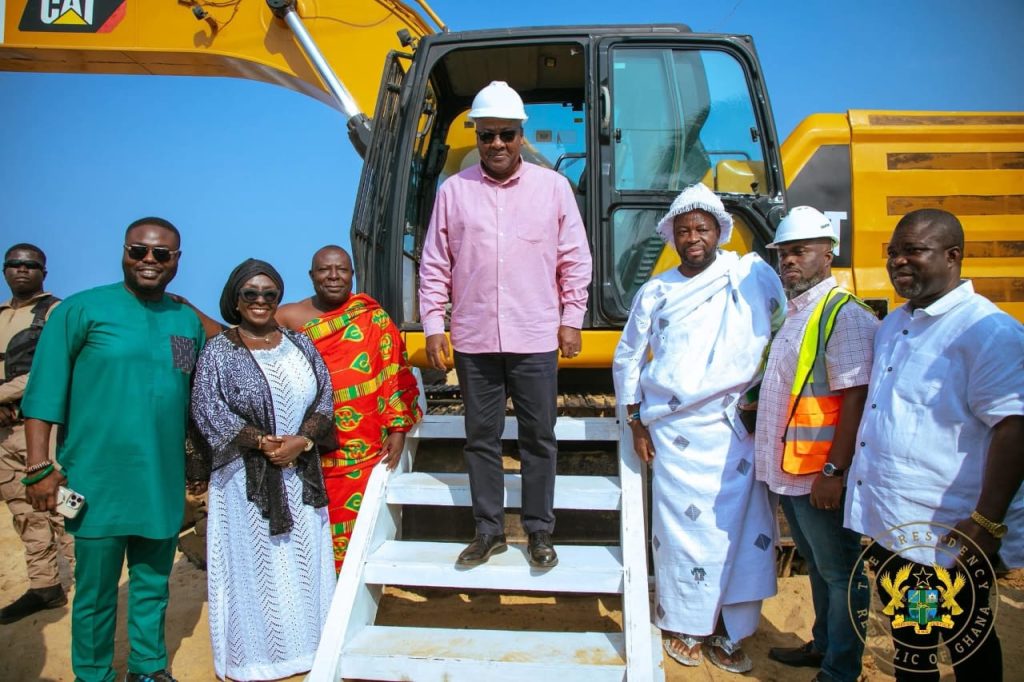
He further highlighted the need for attention to be given to the deteriorating roads in the town.
He concluded by assuring the government of the community’s cooperation throughout the execution of the project.
The colourful event was witnessed by Mr Edward Korbly Doe Adjaho, the Chairman of the Council of State, Madam Ablah Dzifa Gomashie, the Member of Parliament for Ketu South and Minister of Tourism, Culture and Creative Arts, and Mr Kenneth Gilbert Adjei, the Minister for Works and Housing and Water Resources.
The rest are the visiting Serbian Foreign Minister Mr Marko Djuric; Mr Samuel Okudzeto Ablakwa, Ghana’s Foreign Minister; and Mr Fiifi Fiavi Kwetey, the General Secretary of the ruling National Democratic Congress (NDC).
Some traditional rulers, who also graced the occasion, were Torgbiga Adamah III, the Paramount Chief of the Some Traditional Area and Togbui Adzongaga Amenya Fiti V, the Paramount Chief of Aflao Traditional Area.

